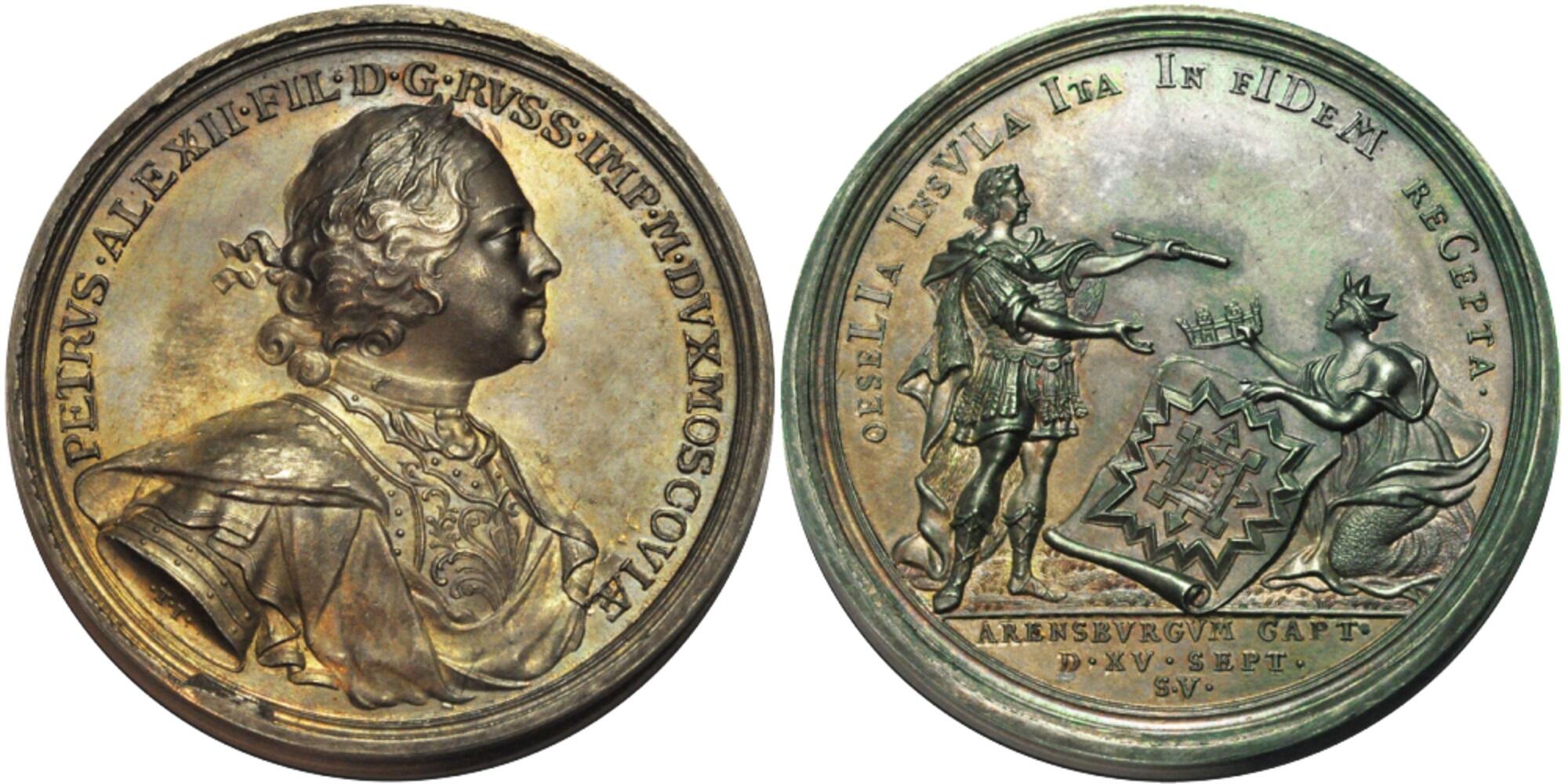One of the important events of the Great Northern War was the Livonia campaign of 1710.
The onslaught on Livonia was carried out from the west and east by Russian troops under the command of Boris Sheremetev near Riga and Narva. In the beginning of the year, the detachment of Colonel Vasily Zotov — the future commandant of Reval [current-day Tallinn] — cut off Reval from the rest of the region; in March, Riga was under siege.
In June, an attempt by the Swedish government to transfer troops from Sweden and Pomerania by sea failed. On July 4, after a ten-day bombardment of the besieged city, the Riga garrison surrendered. Soon this example was followed by the Dünamünde fortresses (area of contemporary Daugagriva district in Riga), Pärnu, Arensburg and Reval, located in the Baltic region and occupied by the Swedes.
By the order of Peter the Great, a series of medals was established to commemorate the victories in the Great Northern War. They were made by one of the best medallists of his time, Philip Heinrich Müller (1654–1719) from Augsburg.
In accordance with the canons of Western European medal art of the Baroque era, the series has a solemn praising style. On the obverse side of most of these medals is a profile portrait of Peter the Great from the chest up, facing to the right, crowned with laurels and dressed in armor draped with a cloak. The portrait is bordered by a circular legend indicating the name and title. On the edge of the tsar’s shoulder is the letter “M” — the monogram of the master.
The reverse side of the medal contains real geographical locations, as well as images of the mythological patrons of the tsar-commander: Mars, Minerva, Victoria, Neptune. They do not take part in the battle, but demonstrate their affection for Peter.
The Latin inscriptions on the edge of the medals contain statements by Ovid and Virgil or an assessment of events in an impassioned tone. The description and date of the battle can be seen on the edge of the medal. The year is often encrypted with a chronogram, which can be decrypted by reading the highlighted letters and adding their numeric values. In addition, many medals have an inscription on their edge.
To create a minted coin or medal, the engraver cut out a pair of steel dies (stamps with an inverse image) that corresponded to the two sides of the coin or medal. Then a circle of metal was placed between them and pressed together. Such dies allowed to mint up to several hundred copies of the coin or medal.

